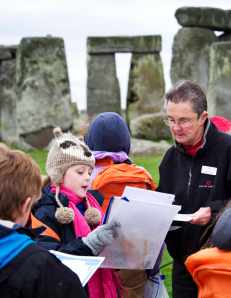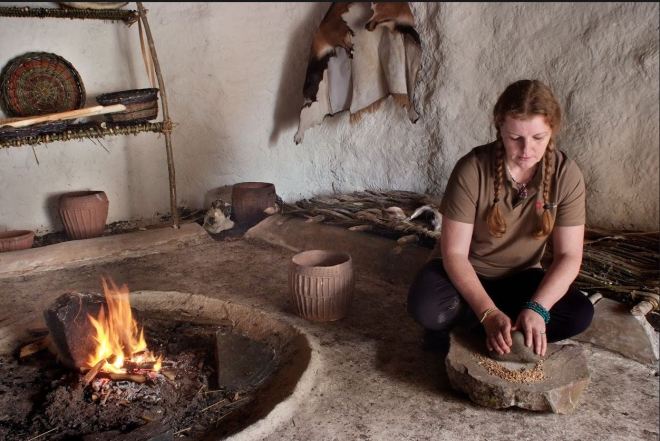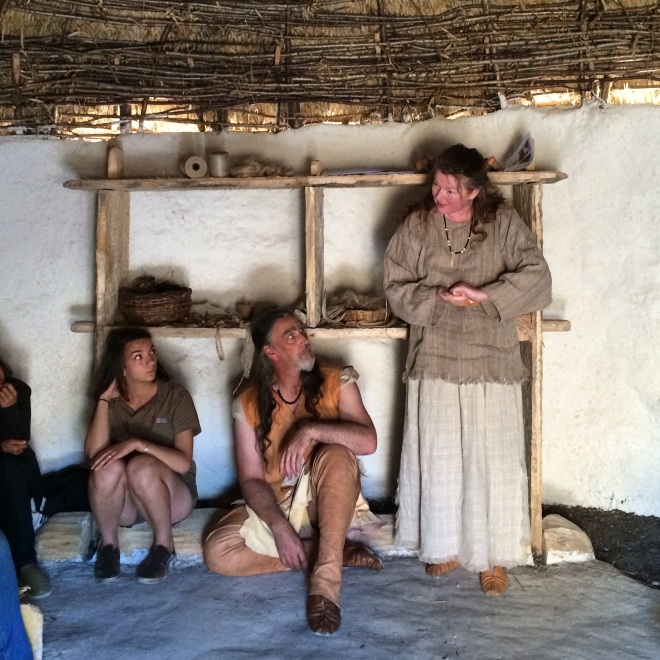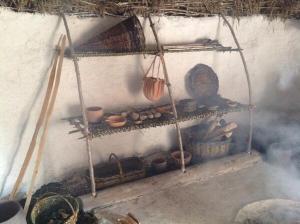 Daub is made by crushing the chalk and then mixing it with chopped straw and water. This claggy mixture is then applied to the woven wall under the eaves. It takes a while and it’s quite messy!
Daub is made by crushing the chalk and then mixing it with chopped straw and water. This claggy mixture is then applied to the woven wall under the eaves. It takes a while and it’s quite messy!
The walls are daubed on the inside and out and externally the eaves of the roofs create a ‘rain shadow’ to protect the daub from the weather.
We asked one of the volunteers Guy Hagg to tell us a bit about his experience of daubing the houses.

What is the most difficult part of daubing?
The most difficult part is getting the mix right. It’s a bit like the three bears porridge. Sometimes it’s too runny, sometimes it’s too dry and sometimes it’s just perfect.
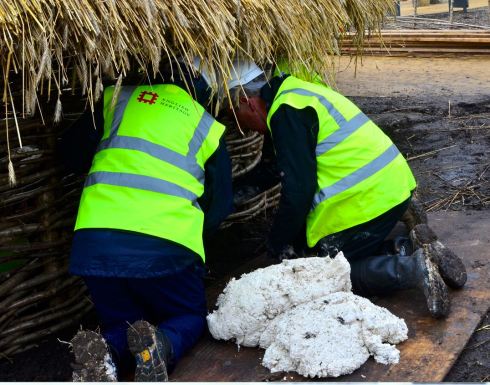
How do you get the daubing to stick to the walls?
If the mix has the right consistency it sticks to everything! The consistency you are looking for is a firm putty. This has the malleability for it to be worked into the weave of the walls so that it forms a solid structure, rather than just a thin skin of daub on the wall surface. Both the inside and outside of the wall are worked on at the same time so that the daub binds together and makes the wall stronger.

What is the daub like to work with?
Very satisfying when the mix is right. It goes onto the wall well, fills the gaps and does not slump. Slumping occurs when the mix is too wet and the thickness of the daub in some areas causes the mixture to sag under its own weight. I like daubing as you can see a lot of progress very quickly compared with thatching which can take a considerable amount of time to complete a roof.
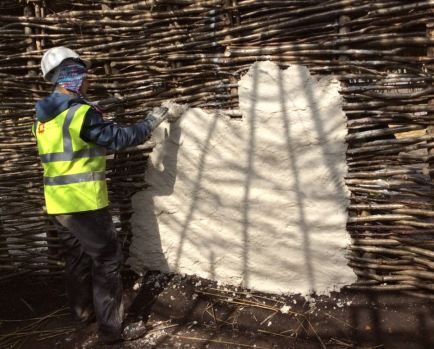
Is there a trick to successful daubing?
Start at the bottom and work up the wall, filling in the gaps in the hazel weave and ensuring that you apply a thick enough coating. If the daub is applied too thinly you can’t push the larger pieces of chalk into the wall and you end up with a rougher finish. Once the daub is applied the wall is then patted over to obtain a good finish. Again the consistency is important at this stage as if the mix is too wet the patting raises a series of small peaks, rather than creating a smooth finish.

Guy happily daubing
What is the recipe/method for a successful mix of chalk, water and straw?
The recipe is approximately 15 shovels of crushed chalk, a handful of hay that has been teased apart and a small quantity of water. Mix until the daub develops a putty like consistency, similar to a bread dough mix. It is more of an art than a science and a wetter mix may be useful for filling in areas where concavities arise once the first layer has been applied to the woven hazel. A drier mix is preferable when applying the initial layer as this is often applied quite thickly due to the irregularities of the hazel weave.

Around 12 tonnes of chalk is needed to daub our five Neolithic Houses. Imagine how much would have been needed for the settlement at Durrington, which it has been suggested may have been the largest Neolithic settlement in Britain and Ireland.
______________________________
Would YOU like to help us bring the stories of the Neolithic people to life?
It won’t be long before the houses are finished and we are looking for Neolithic House interpretation volunteers. If you are interested, you can find out more on the English Heritage website. As a Neolithic House Interpretation Volunteer you will be responsible for maintaining the Neolithic houses once they are built, by lighting fires and assisting with the building maintenance. You will bring the stories of Neolithic people to life in our external galleries, working with our replica artefacts currently being painstakingly made by experts, and provide a warm and friendly welcome for all visitors, helping us to deliver a world class visitor experience.

